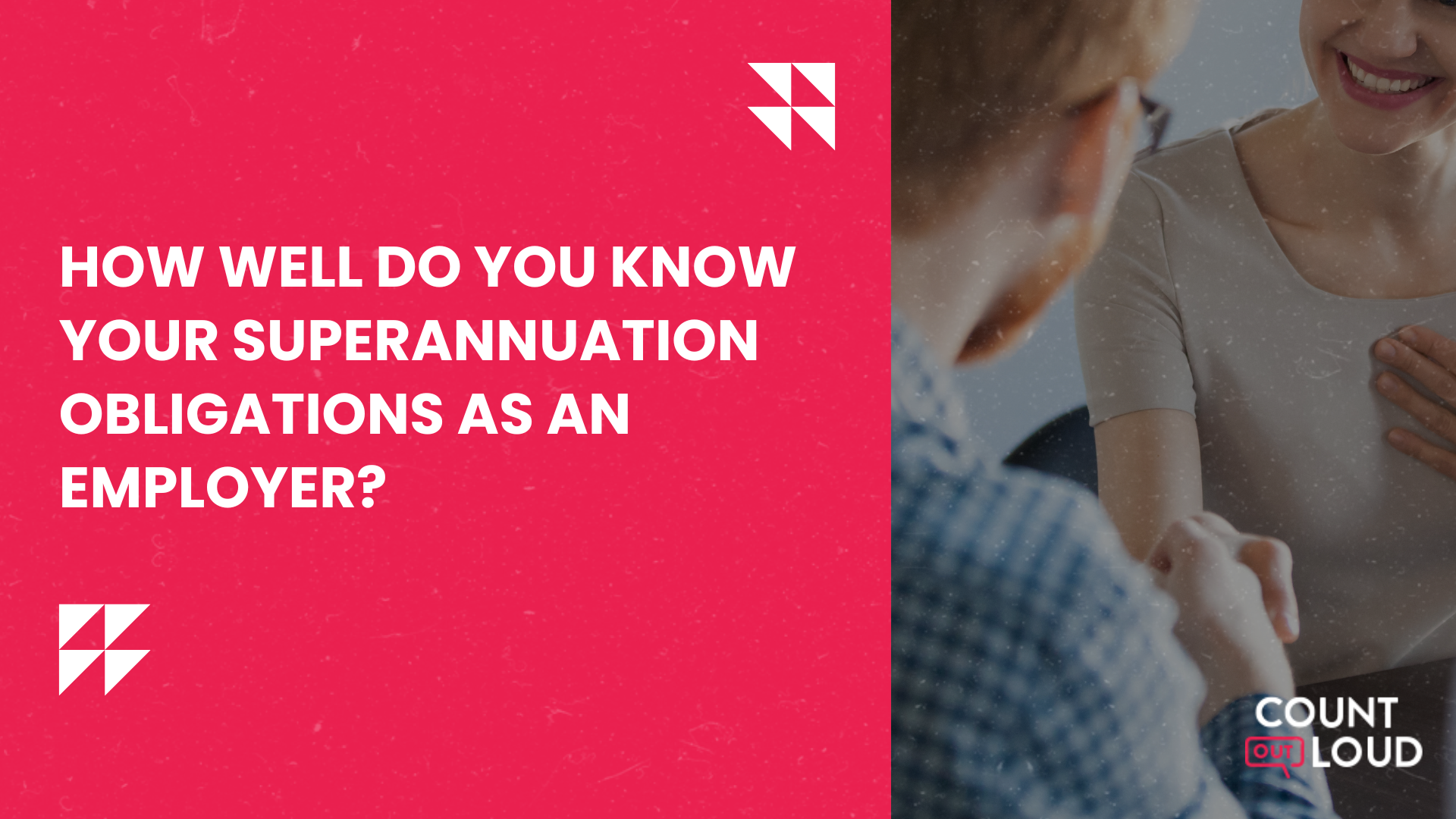| Are you confident about expected superannuation contributions by employers? Do you know the upcoming changes to contribution rates? What happens if you miss a payment deadline?
If you’re unsure about any of these, you’re in the right place. Let’s make sure you’re fully up-to-date on your superannuation responsibilities as an employer.
Who should receive superannuation?
Employees aged 18 or older are generally entitled to superannuation, whether they work full-time, part-time, or casually and work more than 30 hours per week. However, employees under 18 who work fewer than 30 hours per week, as well as those on unpaid leave, are not eligible.
What about contractors?
In most cases, you’re required to pay superannuation for contractors who provide personal labour, even if they have an ABN. However, if you’re contracting with a company or partnership, superannuation is not required for that entity.
How much superannuation to pay
Superannuation contributions are calculated as a percentage of an employee’s wages. The rate is set to increase to 12% from 1 July 2025. If an award or Enterprise Bargaining Agreement (EBA) specifies a higher rate, you must adhere to that rate.
To determine the exact amount due, you can use the ATO’s SG contributions calculator.
Payment deadlines
Contributions must be made at least every three months. Here are the deadlines:
- 1 July – 30 September: Pay by 28 October
- 1 October – 31 December: Pay by 28 January
- 1 January – 31 March: Pay by 28 April
- 1 April – 30 June: Pay by 28 July
Monthly or fortnightly payments are also an option if they align with your agreements or awards.
Missed payments: What to do
If you miss a deadline, you must file a Super Guarantee Charge (SGC) statement within one month of the quarterly due date. This involves paying the SGC to the ATO, which includes:
- Unpaid SG payments
- Interest on the outstanding amount
- An administration fee
Additional penalties apply if you fail to submit the SGC statement and pay the SGC on time.
Offering a choice of super fund
You generally need to offer employees the right to choose their super fund. Provide a ‘standard choice form’ to new employees within 28 days of their start date. If they don’t make a choice, you can use a default fund or obtain their stapled fund details from the ATO.
Providing tax file numbers (TFNs)
You must send new employees’ TFNs to their super fund at least 14 days before making their first contribution. For existing employees, provide their TFNs within 14 days of receipt.
Reporting extra super payments
Report extra super payments, like those from bonuses or salary sacrificing, to the ATO. This could impact any government payments your employees receive.
Using SuperStream
SuperStream is an electronic system for making super contributions for your employees. To comply with SuperStream requirements, you need to:
- Provide all super contribution details electronically
- Ensure payments are made online
- Link your data and payments with a unique reference number
- Send the data and payments on the same day
Want stress-free payroll and superannuation management?
Managing payroll and superannuation involves many details that can easily become overwhelming. At Count Out Loud, we simplify this process by using advanced systems to provide precise, compliant, and timely payroll and superannuation management.
Get in touch and learn more about how we can help your business through our service offering from support with payroll and super all the way through to Virtual CFO, outsourcing your finance department.
|
